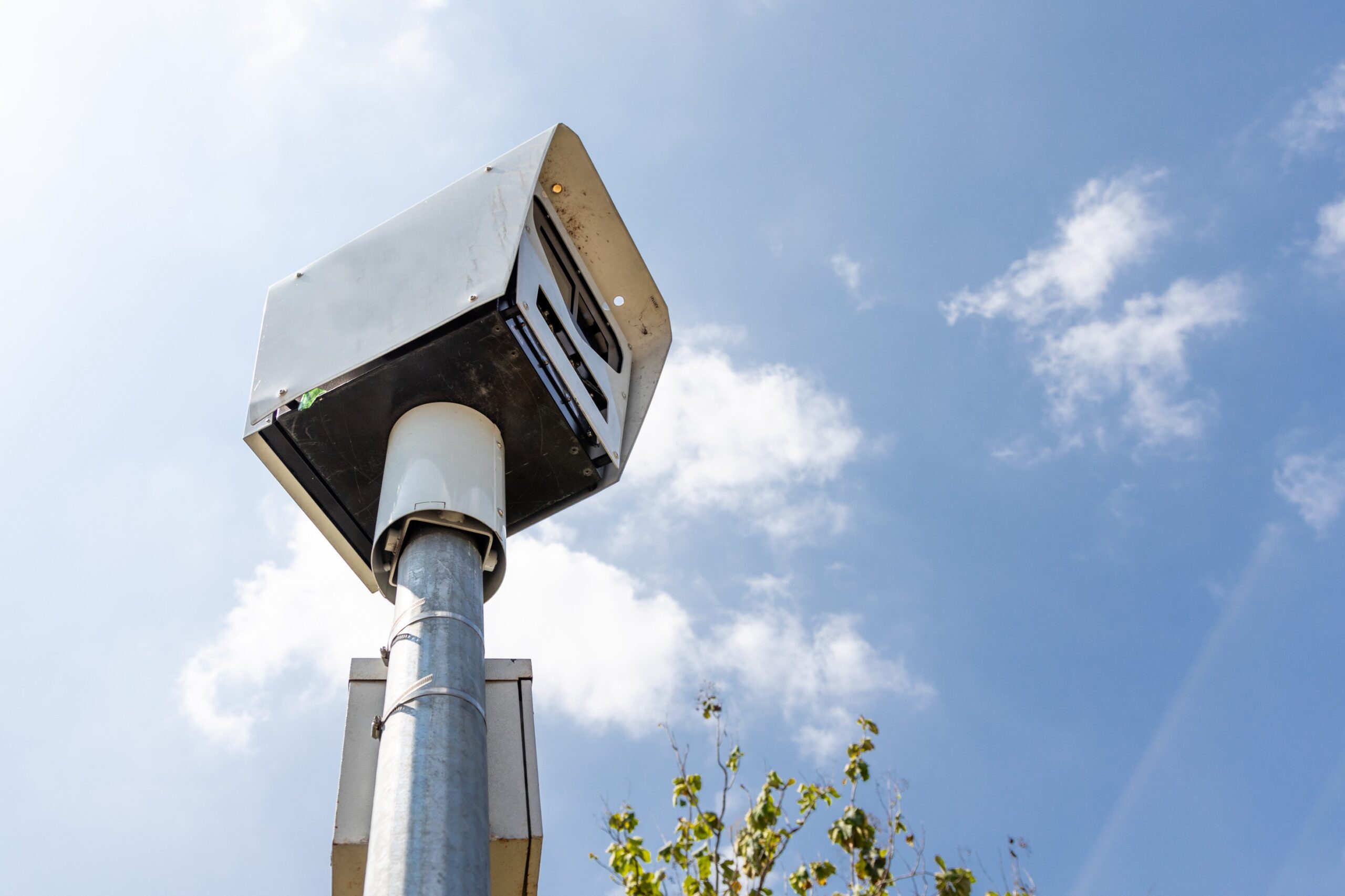How Kansas City Police Set Up Radar Equipment for Speed Enforcement

Speeding tickets are prevalent in Kansas City. Police use radar devices to determine the speed of motor vehicles and enforce traffic regulations. Radar devices emit radio waves that bounce back and thus measure the speed of an automobile.
Radar equipment installation isn’t a matter of flipping the switch. It takes skill, experience, and a great deal of precision. A fraction of an installation error can equate to a misread speed, which can affect the validity of a speeding ticket.
This article explains how Kansas City police go about installing their radar equipment, the methods they employ, and how accuracy can be ensured.
Choosing the Right Radar Location
Radar installation begins with the selection of the location. Kansas City police officers choose locations using accident history and traffic statistics.
Some of the common locations include:
- Highways like I-70, I-35, and I-435
- School and roadwork areas
- Busy intersections with complaints of speeding cars
- Residential neighborhoods that are safety concern areas
The location chosen needs to provide an unobstructed view of the incoming traffic. Obstructions like trees, poles, or signs can reflect radar waves and produce interference.
Officer training involves avoiding setup points with strong reflection threats. An excellent radar point offers an unobstructed line of sight to the target vehicle and adequate space to effectively measure speed.
Stationary Radar Equipment Installation
In the case of static installations, officers park their patrol vehicles at a secure and open angle relative to the street. The radar equipment is mounted inside or outside the vehicle, depending on the model.
The radar antenna must be set pointing directly down the traffic lane. It will produce a “cosine effect” to create slightly lower speed readings with a slight angle.
Kansas City officers do the following before using stationary radar:
- Mount the radar unit securely.
- Check the power supply and cables.
- Point the radar antenna down the path of traffic.
- Test display and signal strength.
- Check calibration with a tuning fork test.
After they are installed, officers monitor the radar screen as vehicles pass through the beam. The radar displays both the patrol car’s speed (if moving) and the target vehicle’s speed.
Installing Equipment for Moving Radar
Moving radar is used whenever officers drive in their patrol vehicles. These pieces of equipment are more complex because they capture both the speed of the patrol vehicle and the target vehicle’s speed.
Steps for installing moving radar include:
Mounting front and rear antennas.
One shoots ahead, and one shoots behind to watch for cars in both directions.
patrol speed monitoring
The radar measures the speed of the police car itself by ground reflection.
Target mode switching
The officer selects which direction to watch for vehicles—coming or going.
The radar calculates the target speed by subtracting the speed of the patrol vehicle from the relative speed read.
Officers are told to check for spurious readings from surrounding automobiles or reflective surfaces. If there are multiple automobiles within range, the radar locks onto the strongest signal and not necessarily the right one.
Proper training reduces such errors and offers impartial enforcement.
Calibration and Accuracy Checks
The reliability of radar is dependent upon a daily calibration. Kansas City police have stringent procedures before and after every radar shift.
Each radar unit has a tuning fork that oscillates at a specific frequency. While held in front of the radar, the fork simulates a moving vehicle. If the radar indicates the correct speed, it has successfully passed the test.
Officers also record:
- Date and time of calibration
- Radar model and serial number
- Officer name and badge number
- Reading results from the tuning fork test
If calibration logs are incomplete or don’t exist, radar readings can be challenged at trial.
Radar logs are often reviewed by Speeding Ticket KC when defending clients in battle cases for speeding. Failing or erroneous calibration can invalidate a speeding case.
Aiming and Beam Alignment
Radar units employ a thin radio beam that widens with distance. The farther it goes, the more dispersed it gets.
Police officers in Kansas City must aim the beam just so to strike the vehicle in question. The best angle is straight down the road the vehicle is traveling.
When the beam is angled and strikes, it causes a “cosine error.” That decreases the measured speed by a bit. While this error generally works in favor of the driver, it still shows how accurate aiming is necessary.
Officers adjust antenna height and direction to avoid reflections off cars, guardrails, or large signs.
For handheld radar, officers learn to stand steady and aim right at the center of the target vehicle. The slightest shake can ruin the reading.
Field Testing
Once in position for speed traps, officers field-test rapidly. This includes:
- Testing the radar’s internal test mode.
- Verifying readings against the tuning fork again.
- Observing a few vehicles whose speeds are known.
This procedure confirms that the radar is functioning correctly under real-world conditions.
Kansas City law enforcement agencies also require radar equipment to be inspected and certified by technicians periodically. This is to confirm they meet the Missouri Highway Patrol standards for speed measuring devices.
Controlling Environmental Conditions
Weather and environment can affect radar waves. Kansas City police officers consider these when deploying radar equipment.
Common factors are:
- Rain or snow: Can scatter radar waves and lower return signals.
- Wind: Can deflect radar antennas to a small extent and change aiming angles.
- Heat waves: Can produce mirage effects that create bent readings.
- Large vehicles: Can reflect signals and produce false readings.
In order to prevent errors, officers position their radar in open, safe areas and check steady readings before issuing tickets.
Officer Training and Certification
Kansas City police officers who use radar equipment are trained as radar operators. This includes:
- Mastering the basics of Doppler radar.
- Learning how to differentiate accurate signals.
- Performing proper setup and calibration.
- Detecting and avoiding radar interference.
Police officers become certified after successful written and field testing.
Training exposes officers to the physics of radar and the pitfalls of human mistakes.
It also helps to protect drivers from spurious speed readings.
A speeding ticket from an uncertified officer might be thrown out in court. Speeding Ticket KC routinely reviews officer certification records when considering a case.
Record Keeping and Ticket Detailing
Every speeding ticket based on radar must include details of the radar installation. Kansas City police officers record:
- Radar model and serial number
- Calibration date and time
- Officer’s radar certification
- Direction of travel and mode of radar used
- Weather and traffic situation
Detailed records avoid a lack of transparency and guard against officers and drivers. Missing data can provoke questions about the legitimacy of a radar ticket.
Frequent Radar Mistakes that Affect Accuracy
Even with training, mistakes are unavoidable. Common setup errors include:
- Failure to double-check calibration during a shift.
- Incorrect antenna positioning.
- Use of radar near reflective metallic objects.
- Following too many cars in close intervals.
- Severe weather.
- Fog or glare causes poor visibility.
Both of these can affect the speed of reading. A seasoned traffic attorney can review these aspects to see if your ticket was issued on a faulty radar installation basis.
Speeding Ticket KC has successfully defended many Kansas City drivers from radar-speeding tickets using these technical points.
Modern Radar Advancements in Kansas City
Modern radar technology used by Kansas City police officers today also uses directional and dual-antenna capability. These can track cars from various lanes or directions at the same time.
Other radar equipment also captures video images of the reading, making it more concrete evidence in court.
Human setup and calibration notwithstanding technology, a radar device is only as good as the officer operating it.
Why Radar Setup Matters to Drivers
When correctly installed, radar equipment makes roads safer and fairer. But setup or calibration errors can lead to unwarranted speeding tickets.
Police radar operation knowledge educates drivers about their rights and enables them to recognize possible mistakes in enforcement.
If you believe the reading on your radar was in error, call Speeding Ticket KC. Staff reviews radar data, calibration logs, and officer records to find weaknesses in the case against you.
FAQs
1. How do Kansas City police officers install radar equipment in their vehicles?
Antennas are positioned toward traffic, the officers tune via tuning forks, and the accuracy of displays is checked before deploying.
2. Do police need a direct line of sight for radar?
Yes. Radar waves can be deflected by trees or signs and give false readings.
3. How often do police test radar accuracy?
Radar units are tested before and after every shift to check calibration.
4. Could weather affect radar readings?
Yes. Heavy rain, snow, or heat can bend radar signals and reduce accuracy.
5. Can I fight a radar-based speeding ticket in Kansas City?
Yes. Speeding Ticket KC can inspect radar installation, calibration, and officer certification to help fight the war on your ticket.
Final Thoughts
Radar installation is held accountable for effective speed enforcement in Kansas City. From choosing sites to daily calibration and officer training, every step matters.
Radar errors do happen, and even small setup miscalculations can hurt your case. If you received a speeding ticket and believe the radar reading was not correct, you don’t have to fight alone.
Speeding Ticket KC knows radar systems and will help you challenge unjust or incorrect speeding tickets. Call a skilled local traffic defense lawyer near me in Kansas City.

